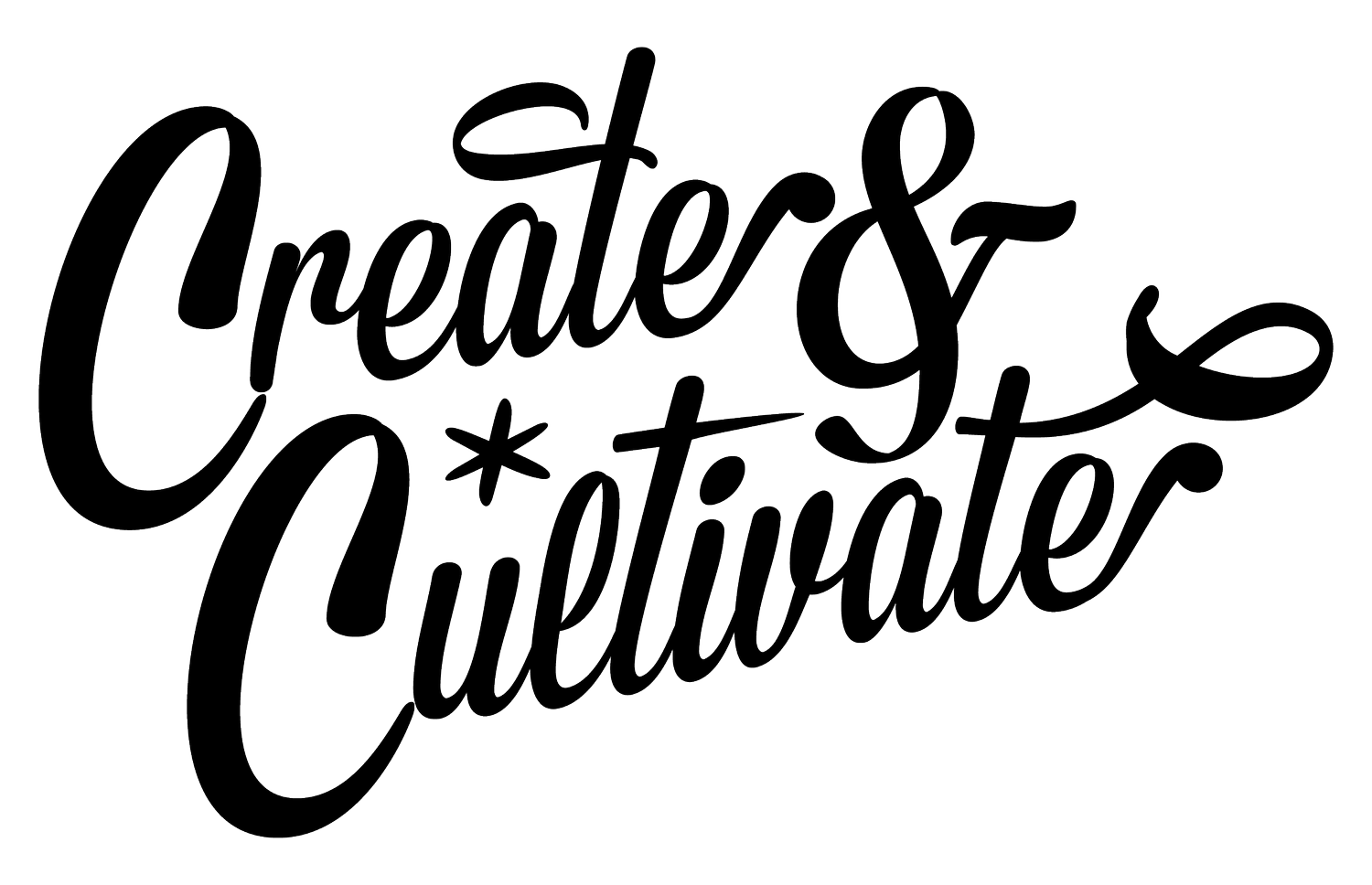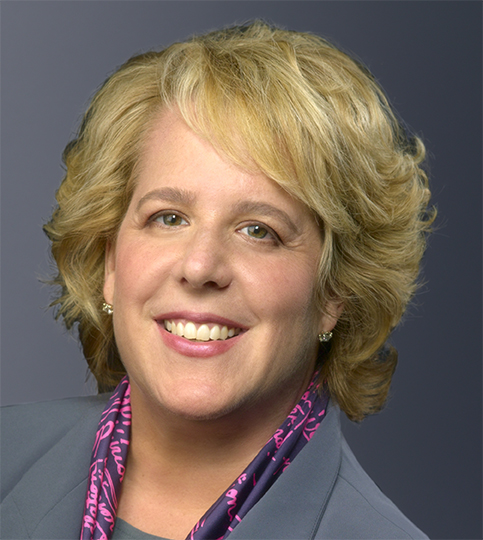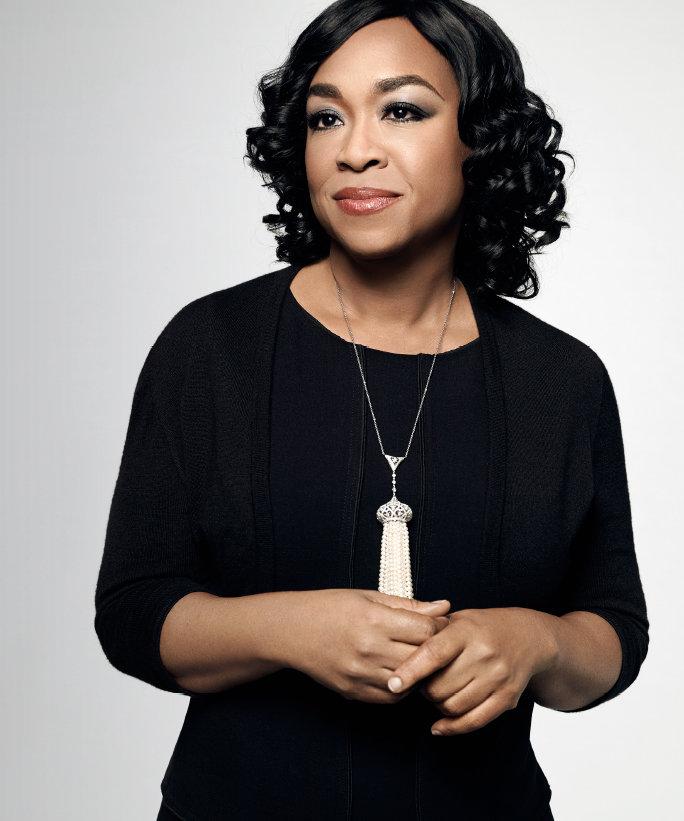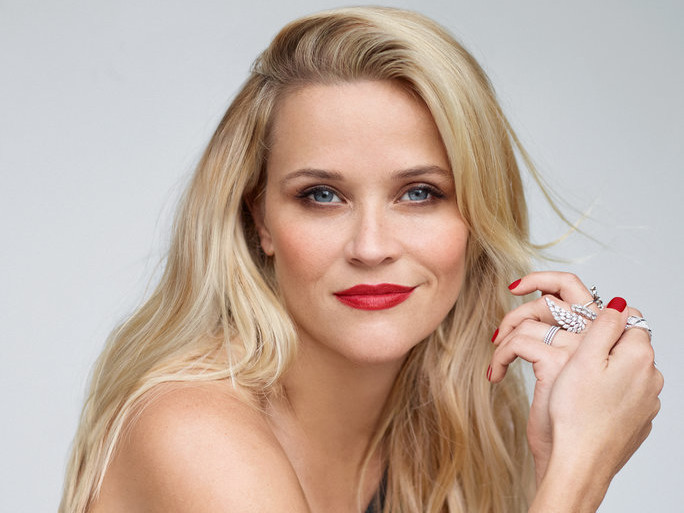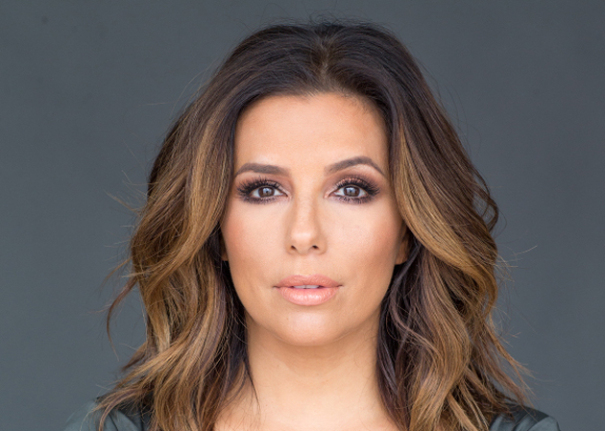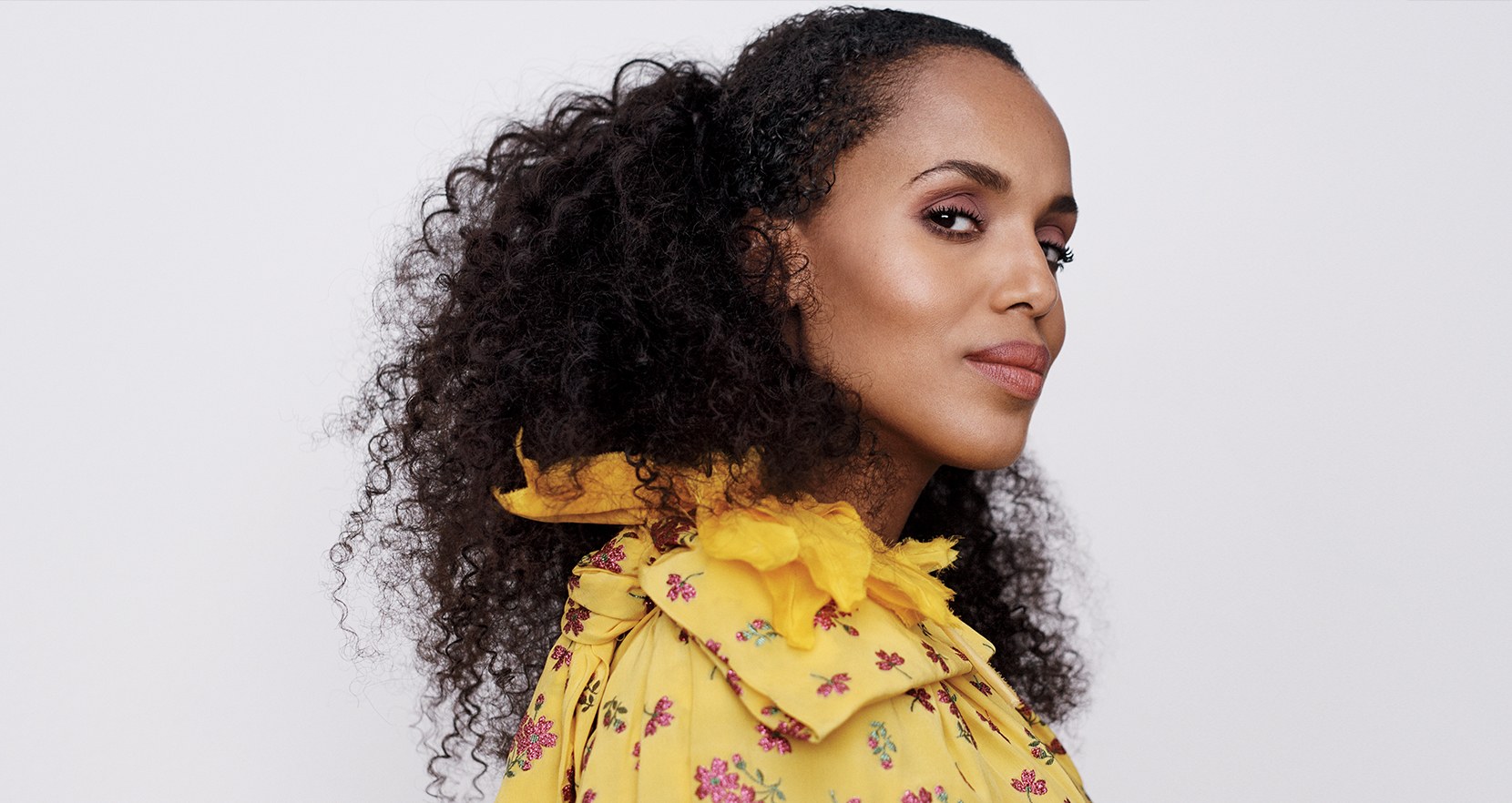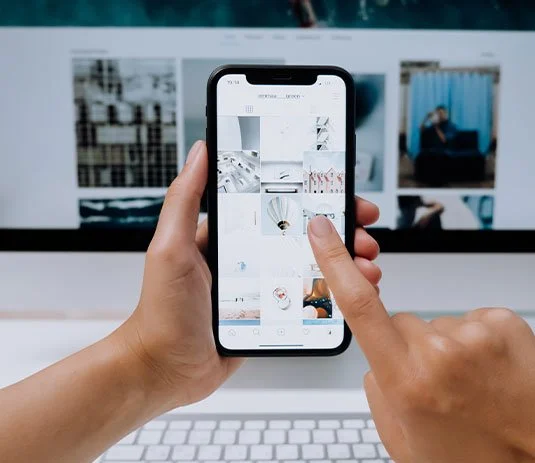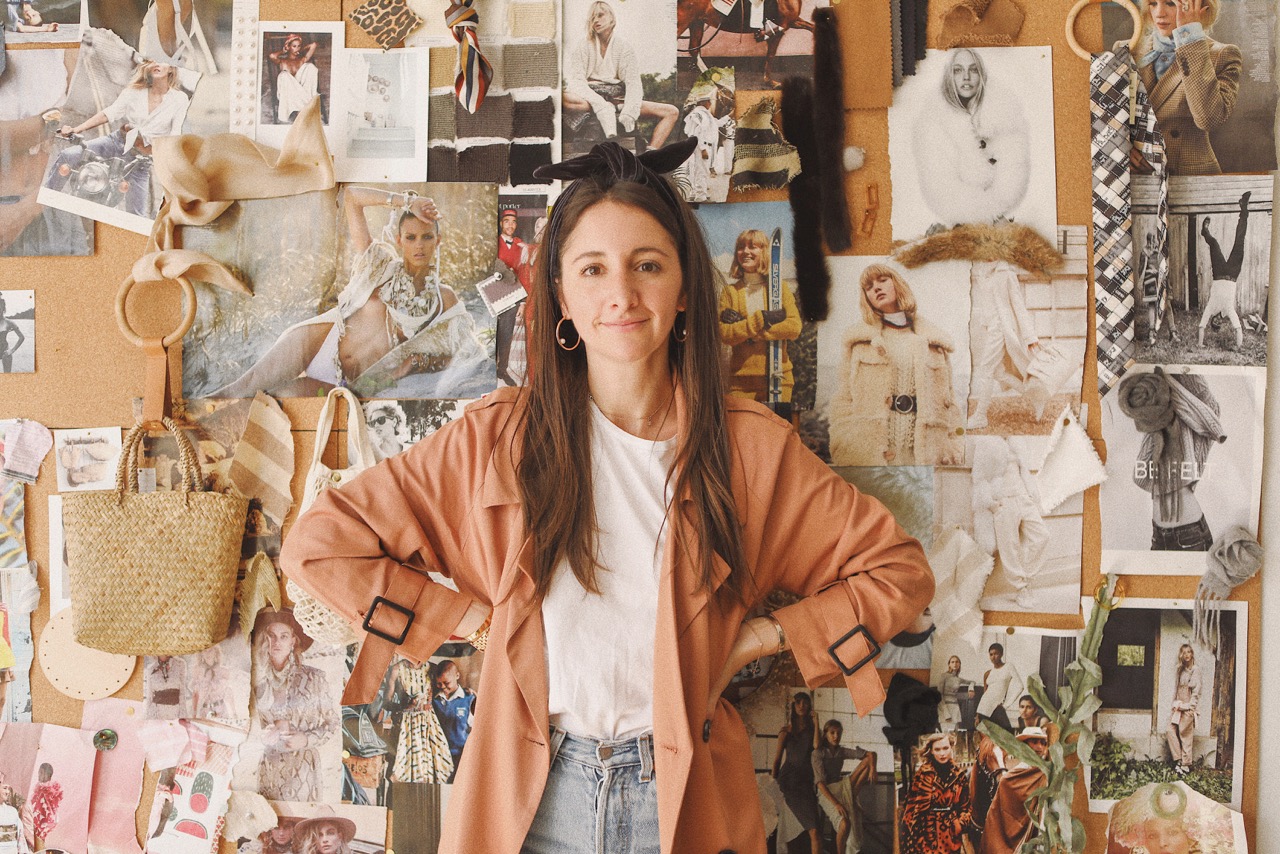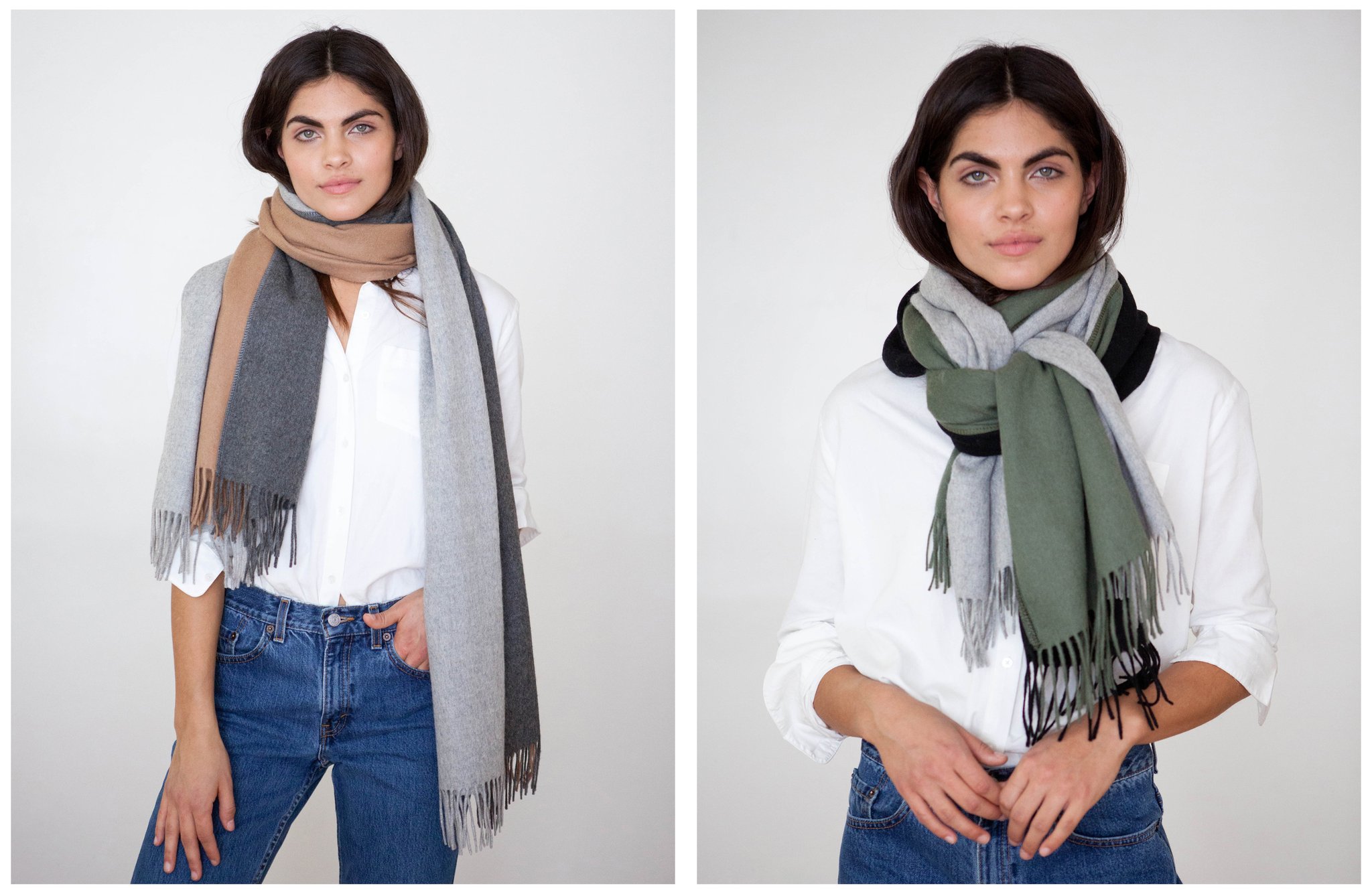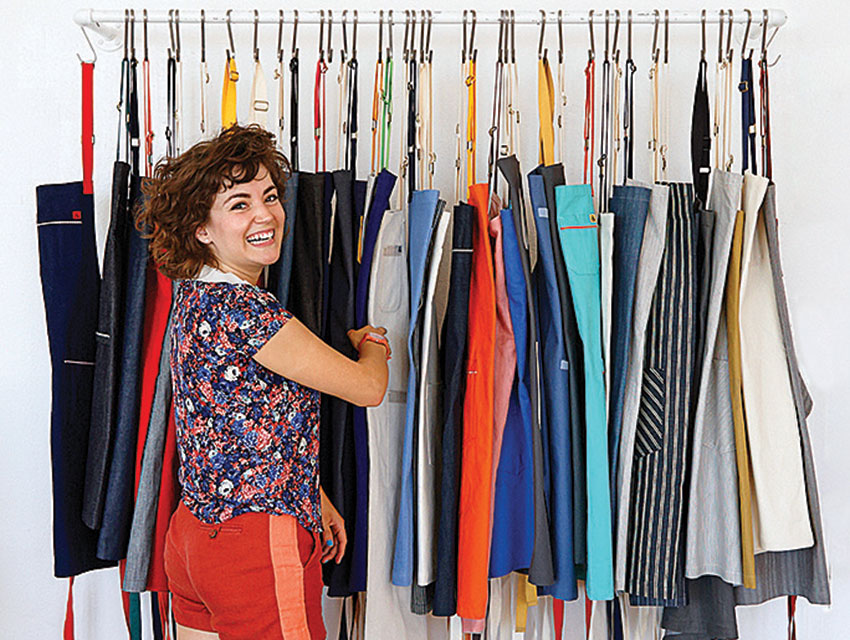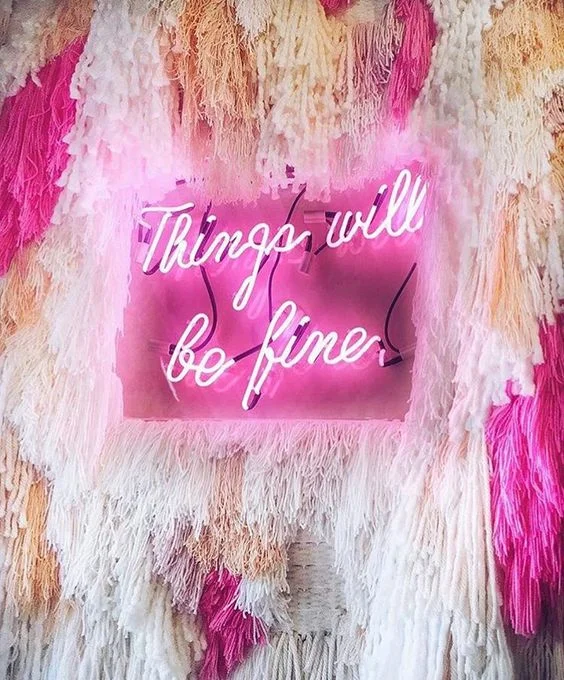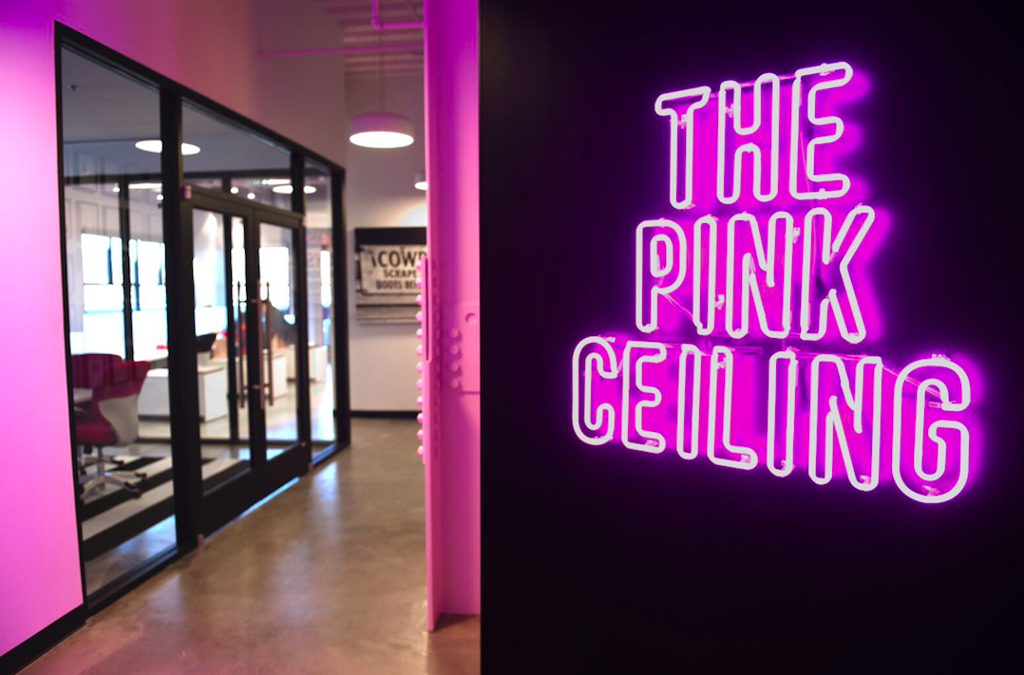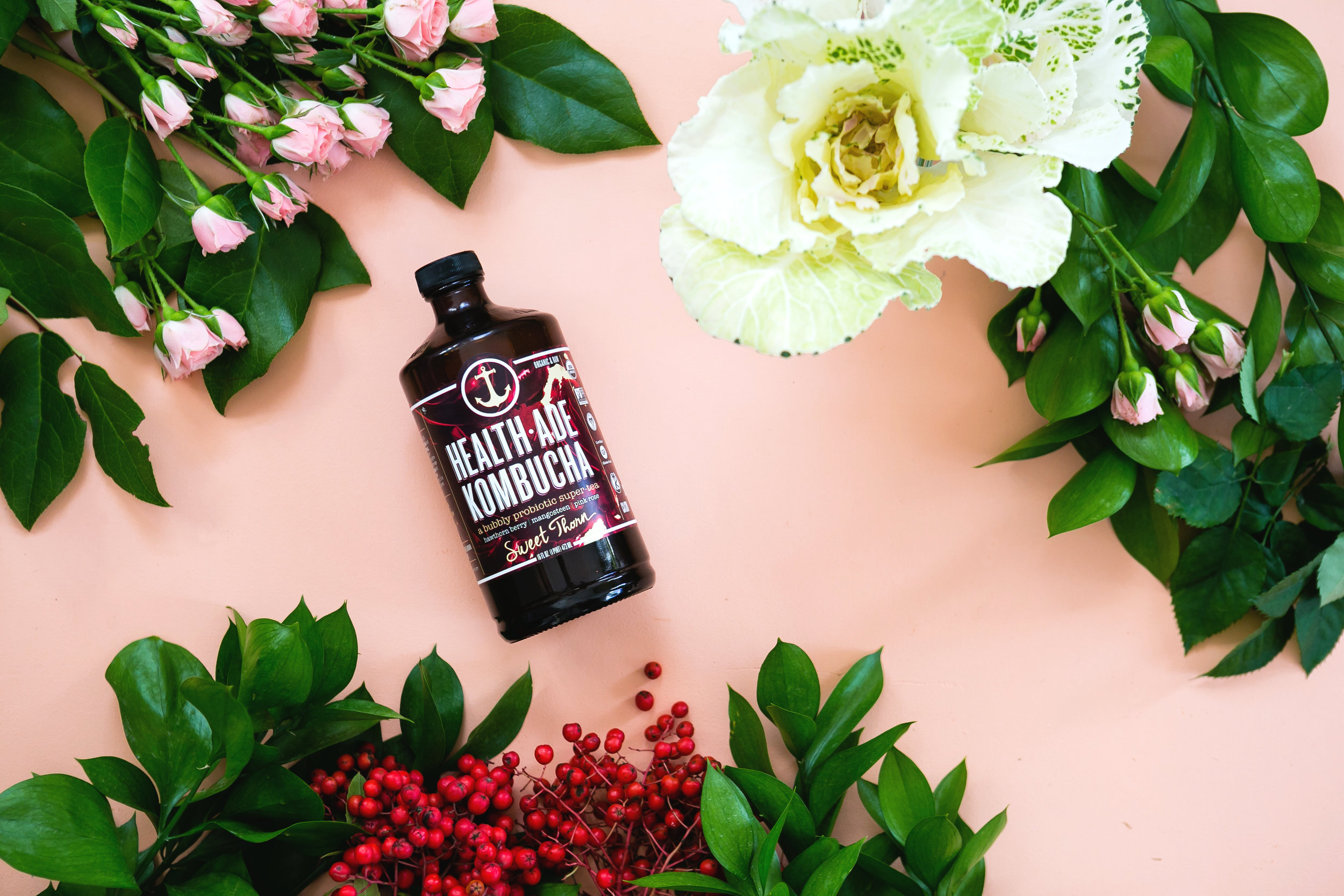Women Moving The Movement, #FollowFriday
Time's Up.
This week's #FollowFriday is all about women behind the scenes of the #TimesUp movement. The all black moment of solidarity at the Golden Globes was just one piece of the puzzle. Time's Up is a leaderless initiative made up of many working groups to fight against sexual harassment.
According to the New York Times, the movement will address:
• A legal defense fund, backed by $13 million in donations, to help less privileged women — like janitors, nurses and workers at farms, factories, restaurants and hotels — protect themselves from sexual misconduct and the fallout from reporting it.
• Legislation to penalize companies that tolerate persistent harassment, and to discourage the use of nondisclosure agreements to silence victims.
• A drive to reach gender parity at studios and talent agencies that has already begun making headway.
Check out these women moving the movement and the groups they're leading down below. Don't forget to show some social media love for #FollowFriday!
Leaders of the new commission on sexual harassment in the entertainment industry
Anita Hill + Nina Shaw
honorary follows*
Television producer + writer and President + CEO of National Women's Law Center
Treat Yourself to the Best New Influencer Program-- Seriously
Calling all content creators.
Amazon may be the spot where you order all your last minute holiday gifts, but it’s also the hub where influencers are taking their content this Winter. That’s right.
Earlier this year when fashion blogger Cynthia Andrew of Simply Cyn joined us on panel at Create & Cultivate NYC, she talked about jumping at the opp to be a part of Amazon Associates— the online retailer’s affiliate program that helps influencers get a share of the revenue. As Amazon has grown its fashion footprint to become one of the largest online apparel retailers, its Associates program is also adding new opportunities to help fashion influencers monetize their blog, including special financial incentives and premium content for qualified influencers. Every piece of content that you create is shoppable and has the ability to be linked to affiliate links.
Now Amazon Associates is taking it even further, with the launch of The Amazon Influencer Program. A natural extension of the Amazon Associates Program, the Amazon Influencer Program provides content creators and social media influencers the ability to create a curated shopping experience on Amazon and share that shop through an Amazon URL customized to their social media handle.
Curious as to how it works? Here’s a simple breakdown:
Apply for the program here.
You’ll need to verify your YouTube, Twitter, Facebook or Instagram account.
As people visit your shop on Amazon, you will have the ability to earn affiliate fees for all qualifying purchases.
Products are added to the shop through the “Add to List” function on a product detail page and the shop product list is managed through the “Your Lists” section of the influencer’s Amazon account.
Through the shop product list, items can be removed, moved to a different order on the page and comments can be added to specific products.
There are plenty of ladies who have already tested it out. From Instagram’s Director of Fashion Partnerships Eva Chen, who describes herself on the platform as “Mom, Fashion Enthusiast, Bookworm.” Her children’s book recommendations are on point.
To Lauryn Evarts, known as the Skinny Confidential to her followers, who has already started using the Influencer Program. Use her page to get her skincare recommendations or nab a Cube Timer— which the influencer carries around in her purse to help her time block.
Evarts also encourages future bloggers to not simply think about monetization. “My Instagram can go away tomorrow,” she told the crowd at Create & Cultivate NYC this year. Which is why she continually works on growing her audience on channels that aren’t beholden to someone else’s platform. “I didn’t go into blogging solely to monetize,” the outspoken blogger explained. “I went in to provide value. That’s one of the most important things. You need to establish value and trust with your readership before you think about money.”
“I didn’t go into blogging solely to monetize. I went in to provide value."
Tweet this.
The Amazon Influencer Program helps you do just that— provide value and community. If you get a little affiliate dough in the meantime— pay it forward this Christmas and buy grandma that sewing machine she’s always wanted.
Once you sign-up there are a couple of helpful tips to make the most of your page.
Be sure to use your vanity URL wherever pertinent.
For example: Use it in a Facebook or Twitter post to drive traffic to the page or in your YouTube video description. *Pro tip: you can even go back through old videos and add the vanity URL to drive new viewers to the page.*On Facebook use the Shop Now button to link to your vanity URL.
Monetizing content on your platform with affiliate links and programs like Amazon Influencer are vital to the longevity and success of your business. And creating community is what it’s really all about— especially this holiday season. So. Why wouldn’t you sign up for the Amazon Influencer Program? It’s a Holiday Gift from you to you. And (like the best gifts do) it costs nothing.
For questions on the program, email influencerprogram@amazon.com and use the subject line “Create & Cultivate Influencer Question.”
MORE FROM OUR BLOG
Why GoDaddy Encourages Their Employees to Have Other Jobs
Heidi Gibson is an engineer with degrees from MIT. She's also won the national Grilled Cheese Invitational.
photo credit: Unsplash
Heidi Gibson, Direct of Product Management at GoDaddy, also runs a small local restaurant chain in San Francisco-- The American Grilled Cheese Kitchen. More so, she has written two successful cookbooks, won the National Grilled Cheese Invitational, been called the grilled cheese savant, and for eight years plus she's taught entrepreneurship and small business finance at The Renaissance Center, a non-profit entrepreneurship hub that serves women and minorities.
WOAH HEIDI. She's climbed so many mountains, we needed to know what the air was like from up top. Does it smell better?
How does one manage everything as a tech expert at GoDaddy and as a business owner? Her answers might surprise you. What also comes as a bit of a surprise is that GoDaddy encourages their employees to have other jobs. Yep. It shocked Heidi too, who was used to having to sign all kinds of contracts preventing her from working on other projects.
Read more to find out how she does it all, keeps her head on, and what 60 pounds of onions has to do with it.
How she builds products for small businesses:
My job is to figure out what small businesses want and need. Which you can do in a variety of ways, my favorite being, talk to them. Then you start with user needs and wants to get your insights.
For example...
We work with a lot of small businesses, those with 1 - 5 employees, and the majority of our customers are women. Our fastest growth areas are outside of the U.S., so we have exploding user bases in India and Africa and South America.
There are a lot of small entrepreneurs starting businesses. An example insight is, a lot of these folks think, if you build a website, it’ll show up. Right? Build it and they will come. So it’s a common thing here, historically, that small business owners build a WIX website and then call up support complaining because they’re not getting any traffic. From that insight, we’ll generate lists of hypotheses from additional research. And we’re like, okay, how do we help small businesses understand that they’ll actually need to market their website in order to get traffic? Then, how do we help them execute on that marketing in a completely seamless way, meeting them where they’re at? So, we’re not targeting developers. Most of our customers don’t know what SEO is, they’ve probably never even heard the term. And I would argue that there’s no good reason a baker should understand what SEO is.
"There’s no good reason a baker should understand what SEO is."
Tweet this.
On how she's breaking down the barrier between creative and tech:
Part of the reason I ended up at GoDaddy is because I have a unique background. I worked in tech for 20 years building consumer facing products and I am a small business owner. I've also have been volunteering and teaching entrepreneurship to women and minorities for the past 9 years at a local non-profit. I won the SBA small business of the year award, and so I am part of the San Francisco small business community. And very few people in tech are…
Why this matters, as both an employee and an employer:
What’s very unique about GoDaddy is that they actually encourage that in their employees. As a restaurant owner, every other place I’ve worked I had go through all these hoops with legal-- from conflict of interest forms and all this nonsense to have my other business on the side. And when I went to GoDaddy I asked, 'Okay, where’s the conflict of interest form?' And they said, 'Are you kidding? Run your business, promote your business, we want you to promote it inside, can we hire you for catering? Like, conflict of interest my ass, you know? Your business is a critical part of your success here.' GoDaddy actively encourages it’s employees. Support agents are encouraged to have a side business, even consulting and building websites for people. Even those directly competitive to GoDaddy. You’re not allowed to fully poach customers directly, of course. But you can be direct competitors and apply what you learn on the job. It's no problem, whatsoever because they’re such believers of you really living in your customer's shoes. It’s really refreshing.
So cheesy. Above: bites from the American.
Her standard piece of advice on launching a small business:
Figure out how to start small with what you have, and test your idea. It’s the same thing I do with software. You identify an opportunity, you gather insights, you form a hypothesis and then you ask yourself, “What is the piece of test I can run? How can I prove out my hypothesis in the fastest, cheapest, easiest way?” Your ability to do that is really gonna vary on your business. If you’re interested in marketing consulting, it’s pretty easy to hang a shingle out there, go do some networking, and find yourself a client or two. You’re probably already doing that work pro-bono for friends and family, right? It’d be pretty easy to say, alright, I’m gonna find someone to do this for and charge them and see how this goes and take a step into it without having to give up your day job. Then wait and work it to the point where you just can’t do both. I would say you can do that and that’s where it starts. It gives you freedom to learn and adapt as you go. You can really approach the whole thing in a really scientific way. You know, come up with a hypothesis and test it and think about what worked, what didn’t, and then adjust. Then test again. You have to be objective about your business. It’s hard because you get so caught up in it, and you feel like it’s you and you being the face of your business is also so critical for the success of small businesses. But you have to be able to step back and be like, what’s working, what’s not? Is my price right? Am I talking to the right clients, is this the right product? What’s the fit here and what is really the longer term opportunity and how does this grow? Also, write a business plan.
On whether you need a business degree and dealing with the numbers:
I’ve heard so many people saying “Who needs an MBA?” This one woman said to me, “I went through bankruptcy and I did write a business plan and I think that’s so much more valuable than an MBA” I gotta say I don’t entirely agree. I do question the value of an MBA for a lot of people too, but that old adage of failing to plan is planning to fail, I think is still true. Even if you’re constantly adjusting along the way, you still need to have this vision of where this thing is going and work backward from that vision. Instead of just playing around and hoping something sticks.
"Failing to plan is planning to fail-- I think that's still true."
Tweet this.
Force yourself to go through the act of writing the business plan, even if not a single number in there will ever come to pass. If you’re lucky, you’re 50% off, and that’s fine! It still gives you this benchmark for success, and now you’ve got a plan for success. If you go through the effort of doing the math and doing the research, you will learn so much along the way of putting together that research by forcing yourself to write a marketing plan and the financial projections. Yeah, it’s tedious but what you’re going to get out of it is so much more than what you’ll be putting into it. And another critical part of what that process makes you confront is realizing what you’re good at, what you know, and what you’re not good at and what you don’t know. And also, forcing you to think through, “What am I going to do? Okay, I don’t anything about finance and bookkeeping.” For more common scenarios, you’ll have some artisans who may not know marketing or bookkeeping or finance, which, good news, there’s plenty of people who do. But recognize that and plan for it and budget for it. When you’re starting out, you’ll probably have to do it yourself as best as you can and that might mean you might be uncomfortable. But understanding that long term you’re gonna need to budget for an accountant and a bookkeeper to help you figure out what your pricing is or how much you need to sell and to do that calculation of when to quit your job and go fully into it.
What she encourages young entrepreneurs to do:
I tell a lot of young people to go out and get an internship with a business owner. Specifically with the kind of business you want yours to be and what you want to do.
Yes. She did this herself.
Here I was, a VP of product and I went out and knocked on doors of cafes and sandwich shops until I got a little bagel shop to hire me-- they didn’t even pay me. I just worked for free. And we told him what we were doing. That we wanted to our own sandwich shop. It had been 15 years since I worked at a restaurant. I told him, 'I want to follow you around. Here’s what you’re going to get out if, I’m going to work for you for 6 months, which is longer than most people stay in restaurants. I’m going to rewrite all of your training documentation for you, update your systems, all of your ordering paperwork and do all this admin stuff, if you allow me to use that as a template for my own business.' Certain entrepreneurs will bite at that and realize, here’s the most motivated person I’m ever going to have and they’ll understand that you’re not a threat, you know? You’re not opening a sandwich shop across the street from you. I’m across town! People aren’t going to be deciding whether to go to my place or your place.
You can do it almost anywhere. You’d be surprised at how often, if you go through the owner, the amount of people who have gone through this journey at some time in their life. Usually they all say yes! What do they have to lose?
And she does it for others.
There’s a woman who owns an Indian wine bar in the city who was a system engineer and took my business planning class and was writing a business plan for her wine bar and she had no restaurant experience. She’d worked in tech her whole life and I let her know it's way harder than you think. And she goes, 'I get it, I get it.' So I said, 'Okay, come work at my restaurant.' And she did. And I told her, 'Okay break down these 50 pounds of potatoes and 60 pounds of onions.'
For women trying to find their voice. Gibson says:
Find an excuse to stand up during meetings. Walk up to the screen and gesticulate, assign people follow-up work – everyone will pay attention to you if you're standing, it's like a miracle has occurred. Suddenly you're in charge. It's now a joke in the office every time I do it (“Ha! Heidi's hijacking the meeting again!”), but it still works!
Expect that you'll need to 'socialize' your idea, no matter how fantastic it is. You'll likely have to pitch it to all the stakeholders separately and talk it up repeatedly for it to 'stick.' Don't get discouraged if, initially, people are interested but nothing happens. Also don't get discouraged if, after a while, nobody realizes it was originally your idea.
Let's say it again, WOAH Heidi, you superhero.
MORE FROM OUR BLOG
How Cold-Calling Chanel Landed One Woman Her Dream Job
Twist ending on this one.
Alyssa Wasko cold-called her way into a job a Chanel. For most, that sounds like a dream job. (And it was.) But after six years at the fashion house, the budding designer struck out on her own, launching DONNI (previously Donni Charm). Wasko named the brand after her late father, whom she lost during her time at Chanel. She started making scarves as a way to cope with his passing, but it quickly turned into something more.
Today, DONNI, is a collection of everyday essentials, each with endless ways to wear. Scarves, capes, and more are made in Los Angeles by women who are like family to the brand. Something her dad would certainly be proud of.
You started you career at an incredibly chic fashion house. How did you land the job?
Persistence. I called the head of Chanel USA’s Visuals and Image department every day for about 3 months leaving him voicemails until he finally called me back. I think he gave me the job so I would stop bothering him. He was my boss for 6 years and now one of my closest friends.
Where does that drive and ability to pick up the phone come from?
I think it was how I was raised. If you want something go and get it. But, above all, I am old fashioned and I believe that the best things happen from a phone call. Every day there seems to be a new means of communication and I just like to keep it classic. The phone leaves no room for misinterpretation.
What did you learn while working there?
So much. What to do, what not to do. Working for a big corporation, you learn about infrastructure and procedures, experience that have proven invaluable for running Donni. I think my biggest take away is how important it is for each team member to see how their work directly affects the outcome and the brand’s success. Every email, phone call, meeting, brainstorming session, or even mistakes, by a member at Donni directly correlates to our growth and I think that is such a rewarding feeling. And I hope what makes them happy and excited to come to work each day!
When did you decide to strike out on your own?
I had already started Donni when I was working at Chanel, there were a few years of overlap. I was very lucky that my bosses were so supportive of Donni from the beginning. My father passed away during my first summer working with them so they lived through it all with me in a sense. Because I was able to sustain both for a while, it was hard to figure out when made sense to focus fully on Donni. But, as they say, man plans and g-d laughs and it just kind of happened after a few big orders and trips to our factory in LA. It just became too hard to sustain both and I wasn’t able to put 100% into both anymore.
Sometimes it’s the hardest moments that lead to our greatest development. Can you chat a little about this and how the loss of your dad gave birth to a new chapter?
My mantra and truly my survival was constantly telling myself to act and make decisions that would make my dad proud. A lot of people told me to take a semester off of school to cope, and while I considered it an option I knew my dad would have laughed and said “get your tush in gear. Wasko’s don’t give up.” I not only went back to school, but I took on another 3 classes to my already full course load and a few odd jobs. When that wasn’t enough, on an afternoon that wasn’t sufficiently busy I decided to make a scarf for myself and a friend adding a good luck charm to each. I had always loved scarves and found them so to be comforting yet effortless. Before I knew it, my piers wanted these scarves, and I was so confused! I went to school in Arizona where it was 90 degrees daily. But that’s how I realized my product was a real business, because people wanted more than just the scarf, they were buying into the idea, and the feel good component that it represented.
What would you encourage young female entrepreneurs to test out before they dip their toes in the startup world?
It sounds cliché, but don’t just start a brand to start a brand, let the idea find you—make sure you are truly solving a problem or filling a need, and make sure each of your products goes back to your fundamental solution. But furthermore, anyone can have an idea, and it is execution that determines your success or failure.
"Don’t just start a brand to start a brand, let the idea find you."
Tweet this.
What do you think are some of the biggest misconceptions about starting a business?
That it has this glamour to it. It doesn’t. You are always on the clock, always schlepping, always thinking of how to make things better—even when they are great. There is always room for improvement. I think a lot of people think you start something and hire all of these people and you can go on vacation whenever you want. Couldn’t be farther from the reality, its hard work! And it never stops. Ever.
You did a slight rebrand this year. Can you chat about that decision and why now was the right time?
Who knows if it was the right time, but it just happened. I felt simply that we had outgrown the Charm. I started this brand in college, and I have grown up a lot since then, so I wanted the name to reflect the more sophisticated lifestyle brand that we have grown into.
How do you expect DONNI to grow and change?
Retail is changing a lot these days, so I do see expanding our Direct to Consumer business, but I also try not to worry about the future, and just keep allowing the change as it comes. So far all of our growth has been such an organic evolution. Each pivot and change coming when something presents itself. I hope that that is how it continues. For a very long time.
MORE FROM OUR BLOG
Guess Which First Time Female Director Broke Records This Weekeend?
Is that a double power pose we see?
Merie Wallace / A 24
You might know Greta Gerwig from indie-movies like Frances Ha and Mistress America, but this weekend the 34-year-old actor, writer, and first time solo director broke box office records with Lady Bird.
A coming-of-age story about a young woman in Northern Cali, Lady Bird, charts the ups and downs of teen Christine McPherson, who has a clunky relationship with her mother and requires people in her Sacramento town to refer to her as "Lady Bird," the nickname of LBJ's wife.
(Side bar: Claudia Alta "Lady Bird" Johnson was First Lady of the United States, as the wife of the 36th President of the United States, Lyndon B. Johnson. Notably well-educated for a woman of her era, she proved a capable manager and a shrewd investor.)
Speaking with Rolling Stone, Gerwig said, "Writing this character was an exploration of all these things I didn't have access to or I couldn't be. In that way, it almost felt like this fairy-tale invention of a deeply flawed heroine, but one who I admire. I think she shows courage and a lot of character even when she's flailing."
Gerwig wrote the script between 2013-14, stumbling through numerous drafts and titles. The hard work paid off. Lady Bird broke box office records last weekend.
The lead semi-autobiographical character is played by Oscar nominee Saoirse Ronan. The movie has been dubbed a smash success by critics-- "perfect" according to Rolling Stone-- and moviegoers, who turned out in droves this past weekend to see the film. Opened to limited audiences its first weekend, the movie showed in four locations, a "specialty box office opening." It grossed $375,612 in four theaters, with a theater average of $93,903. Those numbers blow typical small box office openings out of the water, making it the best speciality box office opening of 2017. Those numbers also make Lady Bird the best ever limited debut for a movie directed by a woman. With Patty Jenkins’s Wonder Woman breaking the record for highest-grossing live-action film directed by a woman in the world, it’s a landmark year for women in Hollywood.
Keep on soaring, LB. Keep soaring, ladies.
MORE FROM OUR BLOG
Why This Emmy Winner Says You Should Flip Off Failure
And the best takeaways from her new book.
Fearless and free. It’s a pretty good place to be when it comes to your career. Which is exactly what Emmy-award winning TV news producer and author Wendy Sachs writes about in her book, Fearless and Free, How Smart Women Pivot— and Relaunch Their Careers.
In the book she discusses the self-imposed barriers that hold women back. The job market’s radical change in recent years. And how we can all take small steps that lead to massive growth.
Here are our 5 favorite takeaways that you can apply to your career today. Free? Fearless? Right this way.
1. “The only career goal you should be focusing on right now, is staying relevant.”
In the book Wendy quotes Karen Shnek Lippman, a managing director at the Sloan-Koller Group. Lippman says, “There is no such thing as a career path now.” It’s scary to think about, but in the last decade we have seen industry change exponentially. Keeping yourself relevant, continuing to advance and develop your skills (ahem, learn new ones), and evolve with the times is a way to make sure you keep your job.
2. Your sorry’s add up.
Wendy references the Amy Schumer May 2015 sketch on Inside Amy Schumer, that documents the female tendency to apologize. It’s satire sure, but that means it’s biting. And it packs some truth. Think of how many times you say “sorry” when someone runs into you. Sorry! It’s innocuous enough in that moment, but the propensity to apologize adds up and seeps into our other behavior.
We suggest testing out actively not saying sorry in instances that aren’t your fault. Someone runs into you? Look them in the eye and wait for their apology. See if it shifts your attitude and self-worth even a smidgen. Because smidgen's add up too.
“Inertia is a confidence killer.There’s no time to get stuck.”
3. Confidence is more important than competence.
Wendy cites research from journalists Katty Kay and Claire Shipman and their book, The Confidence Code: The Science and Art of Self-Assurance, in which they found that we’re either hardwired for confidence or we’re not. “Like blue eyes,” Wendy writes, “this inheritable trait is something we are born with— imprinted in our genetic code. Kay and Shipman found that the correlation between genes and confidence may be as high as 50 percent and may be even more closely connected than the link between genes and IQ.”
Did that make your heart stop? We’ve always been told that we can power pose our way to confidence! (Something Wendy also discusses in the book.) And these women are telling us, maybe not? “The key here,” says Wendy, “is that those with overconfidence weren’t faking it—it simply wasn’t bravado or bluster—they actually believed they were that good.”
So what’s a woman not born with the confidence gene do with this research? We say, allow yourself off the hook for not getting the [insert anything you’ve ever beat yourself up about here] and then rewire your brain to become more confident.
Wendy says, “While confidence may be partly genetic, the good news is that it is also very malleable. It’s like a muscle that can be strengthened.”
She also says that “confidence creation is about taking risks.” So go ahead and make some risky moves.
4. Get Up and Go After It
If you’re making risky moves, you’re going to fail. You’re going to fall. Sometimes that means starting all over again.
Wendy recounts the story of Jill Abramson, The New York Times’s first and only female executive editor, who was fired two and a half years into her job. “Some reported,” writes Wendy, “that Jill was ‘difficult,’ which for a female executive is a word loaded with gender double standards. It was also reported that Jill had hired a lawyer before she was fired to look into compensation issues, believing that she was not paid the equivalent to her male predecessor.”
But Jill didn’t stay down. According to Wendy, “The morning after Jill was fired, she went to a session with her trainer that handed her pair of boxing gloves. She had never boxed before, but hitting the bag was intensely satisfying, Jill asked her trainer to take a picture of her with the gloves and she emailed it to her kids who were worried about her.” The pic went viral after her daughter Cornelia posted it to her Instagram.
It’s a great reminder that no one fall is your end. Only you can decide your professional end.
Which is why we love #5…
5. Flip off failure.
Seriously. Process your failure and then give it the bird. (And the wings so that it may fly away.) You can’t become paralyzed because something doesn't work or survive in the marketplace.
"Process your failure and then give it the bird. (And the wings so that it may fly away.)"
Tweet this.
We’re reminded of this modern day biz facet the whole book through. And it’s a vital Wendy says, “Inertia is a confidence killer, and with the world today moving at the speed of social, there’s no time to get stuck.”
For more career advice and how to fail forward, check out Wendy’s book, available on Amazon here.
MORE FROM OUR BLOG
Why This Jewelry Designer Opened Shop on the Most Expensive Block in LA
She's not scared of a little retail apocolypse.
"Creating," says Gorjana Reidel, founder of gorjana, an LA-based jewelry line, "is in her blood." When she launched her eponymous jewelry line in 2004, with her now husband, the two hit the road-- literally putting 50k miles on her car, securing their first 100 stores. The goal was to create and sell beautiful pieces like she saw in luxury department stores, but at much more affordable and approachable price.
It wasn't so much a strategy, she says but, "the only way we knew how to do something." Which might have something to do with why gorjana was the top-selling jewelry line on Shopbop for seven years.
Now, she's opened shop on both Abbot Kinney, the retail-mecca of Venice, CA and the West Village in New York City. It's a massive undertaking, and some might call it an even bigger risk in a brick-and-mortar environment that has big-box retailers shivering in fear. But Reidel's not shaking in her boots. She knows this is a major opportunity. We checked in to find out why.
Why was Abbott Kinney the perfect spot for retail?
Our hometown and flagship store is in Laguna Beach which has a strong artist community and artistic vibe. Venice has a similar vibe and we felt it was the perfect location. Abbot Kinney has an eclectic history and I’m so excited to bring our designs there.
When so many big box brands are shutting down brick-and-mortar locations, how do you make the choice to open up shop?
Being able to create an environment that allows customers to fully immerse themselves in the gorjana brand is very important to us. The goal for all of our stores is to align the retail space with a lifestyle look and feel. Our hope is that the stores will welcome and inspire the consumer, making them feel instantly as if they are in our home.
What is gorjana doing differently?
The store is really allows our customers to experience the gorjana brand. They will be able to shop one of a kind items as well as a full assortment of product. We host weekly events to offer our customers not only fun experiences, but also educational ones. We want the stores to be unique spaces where our customers can really get to know us.
Does the “retail apocalypse” of 2017 make you nervous? Where do you see the opportunity?
No, retail is not dying, it's evolving, and now more than ever it is important to create relationships with our customers and provide memorable interactions within our store space. This is the direction we see retail going, and we want to be at the forefront of that movement.
"Retail is not dying, it's evolving."
Tweet this.
What is the most exciting part of your business right now?
Opening our own stores and being able to directly connect to our customers. We have to opportunity for them to get to know us better, see what we are all about and us also getting know them. Our power gemstone collection is so much more than just jewelry and we love being able to share that with our customer in a more meaningful way, whether it is through an aura reading or just educating them about gemstones. The connection is the truly exciting part.
People shop online. But people also need to feel and touch items in person. How does your online business inform your in-person inventory?
We monitor our selling trends closely and make sure our ecommerce top sellers are available in-store but also offer an entire retail exclusive collection for our customers to feel that they’re seeing something fresh and new. These pieces are all one-of-a-kind and appeal to those looking for something truly unique.
MORE FROM OUR BLOG
Bizz What? Jen Gotch Is Dishing All Her Best Business Advice
Q&A is the new T&A.
If you're like us, Jen Gotch's Instgram stories are at the top of your must-watch list. Every. damn. day. The CCO and Founder of the fun-centric Ban.do has built a brand with cult-like following of millennials. #FORBES. While she might not like to admit it, she's pretty D.O.P.E. at this whole business thing. And when she's not making us laugh (and/or cry and/or laugh-cry) on IG stories, she shoots an advice series called Honor Roll answering fan-submitted questions about business-related things + more.
Watch her spill on spill some solid bizz advice for anyone looking to turn that side-hustle into a full time thing.
Q: I'M THINKING OF STARTING A BUSINESS. ANY ADVICE?
Q: WHAT IS YOUR ADVICE FOR REACHING POTENTIAL FOLLOWERS WITHOUT A LARGE FOLLOWING?
Q: HOW DO I GET STARTED ON MY OWN BUSINESS WITH LIMITED MONEY?
BONUS. Jen also designed a super soft, short sleeve t-shirt as a little tribute to her advice series and 15% of the proceeds will be donated to writegirl, an la-based creative writing and mentoring organization that promotes creativity, critical thinking and leadership skills to empower teen girls.
Love these? We'll be sharing more videos starring JG soon. Leave your burning business questions below!
MORE FROM OUR BLOG
You'll Never Guess What Demo Is Running the Work Force
Hint: now put your hand up.
Single working women are the backbone for most professional organizations in America.
According to the Women in the Labor Force: 2015 Databook:
- 59% of women (over age 16) are employed
- 54.3% of employed women are unmarried (never married, other marital status, divorced, separated, widowed)
- Of the 67 million women employed in the U.S.— 74%of employed women worked on full-time jobs, while 26% worked on a part-time basis.
And in honor of National Single Working Women's Day, we wanted to dig into this a little bit more.
According to Hanna Rosin's "The End of Men and the Rise of Women," 2009 was the first year where the balance of the workforce "tipped toward women."
The senior editor at The Atlantic writes, "Women worldwide dominate colleges and professional schools on every continent except Africa. In the United States, for every two men who will receive a BA this year, for example, three women will do the same."
"Theoretically," she writes, "a twenty-seven- or twenty-eight-year-old woman with no children is at the top o the game. She is, on average, more educated than the men around her, and making more money." ("No children" is a key piece here and discussed below.)
What do you know about the American Matriarchy? In her book Rosin cites tech as one of the main reasons for the rise of the woman. "At some point in the last forty years," she writes, "the job market became largely indifferent to size and strength. Technology began to work against men, making certain jobs obsolete and making what economists call 'people skills,' ever more valuable. For the first time in history, the global economy is becoming a place where women are finding more success than men."
In Rebecca Traister's NY-Times best-seller, "All the Single Ladies: Unmarried Women and the Rise of an Independent Nation," she addresses Rosin's findings. "While some women are enjoying more educational, professional, sexual, and social freedom than ever before, many more of them are struggling, living in a world marked by inequity, disadvantage, discrimination, and property. It's crucial to unpack what's true and what's not true about female advancement--and single female advancement-- across classes, rich, poor, and in between."
One of those factors that cannot be ignored is single motherhood. The Times article, the Disestablishment of Marriage, reports that 60 percent of American women who have their first babies before thirty have them out of wedlock. Traister says that, "the economic ramifications of having children are of course felt most keenly by unmarried mothers; a staggering 42 percent of people in families headed by single mothers live below the poverty line."
But single women are upending tradition. And that's power. "Their growing presence has an impact on how economic, political, and sexual power is distributed between the genders." Single women overwhelmingly voted for President Barack Obama. Single women are changing the definition of family, which directly impacts social policy. "Women," writes Traister, "perhaps those who have lived untethered from the energy-sucking and identity-sapping institution of marriage in its older forms, have helped drive social progress of this country since it's founding."
Women living without marriage are more able to be both professionally and economically than ever before.
Cheers to you badasses. Today is your day.
MORE FROM OUR BLOG
Finally! It's the Launch of the Best Plus-Size Collection Ever
Nicolette Mason and Gabi Gregg are taking over.
photo credit: Premme.
"We're so excited to finally debut our collection, Premme. This is a dream come true for both of us and something we've been working on behind the scenes for years," shares blogger Nicolette Mason.
Launched online this morning Premme is the fashion-forward collection from Mason and fellow blogger Gabi Gregg of GabiFresh, with rightly fresh pieces sized 12-30. A combo of the words premiere, premium, feminist, and femme, Mason says, "Premme was born out of our own frustrations in the plus-size fashion market. We know there are amazing brands out there (and we've been shopping them for years) but still felt like something was missing, and we wanted to create a collection of statement pieces for the babes who aren't afraid to break the fashion rules."
photo credit: Premme
Furthering, "It's been SO hard to keep this secret, but we're so excited to finally share everything. We're starting with a limited edition run of 15-pieces that are inspired by street style and runway trends and are informed by our work experience and the insight our community has shared with us over the years. We can't wait to go on this journey together and grow as a brand."
We can't wait either.
MORE FROM OUR BLOG
5 CEOs Who Look Exactly Like Their Companies
Like mother, like child.
You know that old saying, dogs look like their owners. Well the same applies to companies and their founders.
And why wouldn't they? These women live, eat, breathe their companies. It's only natural their brands would be natural extensions. The great news is, there is NO one "look" that says business owner anymore. You can look like anything and be anything.
Jen Gotch, ban.do
Jen Gotch, the front woman of the poppy and playful ban.do ("serious about fun,") is exactly what you'd expect. With Starbucks collabs and a loyal following, she's tapped into fun in a whole new way. We can't even imagine what her suitcase looks like when she packs.
Ariel Kaye, Parachute Home
photo credit: Lianna Tarantin for Sakara Life
Parachute sheets give you a reason to make your bed in the morning and an even better one to crawl into bed at night. They're unfussy but chic, just like the company's founder Ariel Kaye. “I launched Parachute online with the intention of bringing the brand offline at some point, too.” With the recently opened Parachute Hotel in Venice, CA, the company is providing another opportunity for the community to engage. There's also the new Portland location and the recently added baby line. It's all almost too dreamy to be true.
Justina Blakeney, The Jungalow
Bold with color and mixing and matching patterns, the beautiful brain and founder behind the Jungalow brand is every bit live out loud as her co. Her environment is lush. Full of color, vibrant patterns and plants; it’s a design style that says no to minimalism. In a way, it’s a multi-hustle of its own. And with a New York Times bestseller, The New Bohemians (which, she wrote and shot in less than three months), a Sunset Magazine cover, a booming design business and blog, a tot at home, five employees at her office space, and plenty more in the works, Justina has reached a point where she gets her gig. “Having a lot going on at one time really suits my personality,” she's told us.
Joy Cho, Oh Joy!
photo credit: Joy Cho for Glamour Mag.
There's no way we could put this list together without the founder and creative director of the playful and inspiring Oh Joy! Launched in 2005 as a graphic design studio the color and design maven now has collabs with majors like Target, has authored three books, and consulted for hundreds of companies around the world.
Ellen Bennett, Hedley & Bennett
She revolutionized chef garb and she's often donned in bright, colors. But don't get her playful approach to her wardrobe confused with her aprons. These are badass aprons from a badass CEO. She didn't want mundane. She didn't want stale. So she did it her way and now Ellen and her #apronsquad are taking over kitchens everywhere.
Arianna Schioldager is Editor-in-Chief at Create & Cultivate. You can follow her @ariannawrotethis.
MORE FROM OUR BLOG
How to Trust Your Gut When the World Is Telling You Otherwise
All in a day's work.
Would you be willing to risk it all for you biz? That's what Aussie expat Koel Thomae, co-founder of Noosa Yoghurt did. And it's a route we hear many entrepreneurs take. As they say, without passion and risk, there is usually no reward.
Thomae, alongside co-founder Colorado dairy farmer Rob Graves, launched Noosa in January 2010, with the idea of bringing the sweet, tangy and full-fat yogurt of Australia to America. They are now in the full swing of things, developing new flavor profiles that customers can't get enough of.
So today, we’re talking trusting your gut. You know, going with that undeniable feeling - even when the world is telling you otherwise. Read through as founder Koel Thomae shares her experience keeping it 100 while scaling her company and why she thinks it’s ultimately the core of their success.
DIG IN.
How much of your new flavor offerings is driven by data and market research?
In the early days it was all instinct. As we've grown up into a national brand and face more competition for shelf space we obviously have to be mindful of what's happening in the category and if we are missing any of the top tier flavors. But ultimately we want to deliver a wow taste moment and aren't afraid to walk away from a flavor if it doesn't achieve that mark by our own internal tastebuds!
How much is driven by trusting your gut?
So much. I think too much consumer research can be crippling in innovation. If you love food you know what tastes good and that to me is the ultimate barometer.
Is that still an essential part of being a woman in business for you?
Absolutely! The few times I haven't listened to my gut it has ultimately been a bad decision. But I also take every mistake as a learning opportunity versus beating myself up.
"The few times I haven't listened to my gut it has ultimately been a bad decision."
Tweet this.
Are flavor profiles and the new “mates” driven by trends that you’re seeing in the food world?
We gain insights and inspiration from so many sources in the food landscape, from farmer's markets (can someone please grow more Dapple Dandy pluots so we can launch this flavor!) to the culinary world to looking beyond our category in the grocery store. We have seen a rise in snacking as a whole and know that yoghurt consumption is still underdeveloped compared to other global markets and this was the starting point in our thinking for mates. As we developed flavor profiles we absolutely knew coconut had to be part of the lineup - this flavor has exploded beyond the traditional pina colada of days past!
How do you get ahead of trends in the food world?
I often think of myself and my team as flavor/food trend anthropologists. We all have a passion for food and travel and these in tandem allow us to see and taste so many new things that we bring back to our internal think-tank so to speak. I've taken both national and global food treks (did I mention that I LOVE my job) and we see more ethnic flavors showing up across categories, more spice, more fermented foods. Obviously not everything lends itself to yoghurt but it's a great framework to ideate within and it keeps us at the forefront of trends.
Noosa has really exploded over the last year. We see it everyone. People are freaking out over it. Part of how you continue to innovate is through flavor. What else?
I know, I have to pinch myself at how much people love noosa. Beyond flavor I believe our success is a testament to staying true to who we are and that's making bloody good yoghurt, staying grounded, always making sure we hear and respond to our fans and ultimately having fun.
How do you test new flavors in different markets? What kind of strategy goes into wide-releasing new flavor profiles?
We are so fortunate to have had amazing support from our retailer community in Colorado in tandem with the best fans a yoghurt could ask for. This has allowed us to use our backyard as a test market as we push the boundaries on what is expected from yoghurt, like our sweet heat launch. We also love to reward our Colorado base with special batch flavors like Palisade Peach, available this summer. But we also know when we've got winners that can go national out of the gates like our new Mates.
What’s your favorite flavor in the newest "match" batch?
Maple ginger! I'm a ginger fan and I love that we haven't shied away from delivering on that flavor promise!
And we need to know, how much yoghurt are you eating daily?
I'm a passion fruit noosa a day kinda gal! But now that we have this amazing Mates lineup it could be noosa for brekkie, afternoon tea & dessert!
For more from Koel and how she launched her biz, click here.
MORE FROM OUR BLOG
Ask the CEO: Would You Pay an Executive Coach?
Where do you spend the money when you're struggling?
Daina Trout, CEO and co-founder of Health-Ade Kombucha, AKA the fastest growing kombucha company in the United States, spends her free (ahem, what?) time mentoring younger entrepreneurs. She says it’s an important part of the process that she didn’t have when starting her company in 2012.
Trout explains that often, after speaking with younger entrepreneurs, she'll “discover that they’re trying to have their cake and eat it too. The whole thing about being a successful entrepreneur is that there is some major risk you have to take. That’s the price of the game. Whether it’s a financial or personal risk, whatever it is, you’re taking a risk. I don’t think you’ll meet any successful entrepreneur who didn’t have the moment where they thought, ‘Oh shit, everybody is telling me this is stupid, I’m the only one who thinks this way. I have to quit my job. I have no money.’ Everybody has those stories. So when I talk to the entrepreneurs who are trying to mitigate that risk by keeping their job and their apartments, I tell them, ‘We had to live out of our car, what do you think this is?’”
Not for the faint-hearted, that’s for sure. “When they talk to me like that, I say, ‘OK, you’re not ready to start a business. Give up your apartment for four years. You can’t live the life you have from a corporate, steady and sturdy job, and also start a business. That’s the whole point.”
"You can’t live the life you have from a corporate, steady and sturdy job, and also start a business."
Tweet this.
You can however, make an investment in people who can help you. Early on Trout made the decision to pay an executive coach to guide her. She says the first two years felt like, “physical labor against all odds." She also felt incredibly alone. "I never knew what the next step was. I didn’t reach out to anyone because I didn't know who to reach out to.”
But in 2014, when the company got its first investment, Trout shares that they took $15,000 to invest in leadership. There was an understanding she explains, that “If we expected to build this into a billion dollar brand and have hundreds of employees we were going to have to get way better at managing people. We were complete cowboys. So I said, ‘We can each have 5,000 dollars, do what you want with it, but it has to somehow build your leadership.’ I put together a coaching program and I’m with that coach still to this day and talk to her every two weeks. I don’t think I would be where I am today without her.”
Health-Ade now has 100 employees. “Meeting those 100 employees is a personal milestone. It’s one thing to lead five people, 25 and then 50, but 100 feels different and I’m being forced to tap into a stronger version of myself every year. This year especially.”
Of her coach, Trout says, “She hasn’t ‘taught’ me anything. That’s the thing. She's kind of like a really good therapist. She’s an independent sounding board. By the time you have investment you usually have a Board of Directors, but you can’t share every little thing with them. Also, I don't know if this is a gender thing, but most women I know have to get to their answer. That requires talking it out. And it’s usually right, but you have to get there. So having a coach is awesome. She knows everything that’s happening. She knows about my board members and who my employees are. We’ve talked every two weeks for three years. In that hour that I spend with her I’ll come out with a strong action plan to avoid problems I see coming.”
You don't have to pay to play. There are free mentors out there she shares (like at Create & Cultivate Seattle-- tix on sale NOW!). “My experience has been that when you ask somebody for help, they almost always say they have time.” Noting that there has only been one instance when someone said no. “You get on the phone, talk to people, they’ll answer all of your questions. They’ll share models, structure, the mistakes they’ve made, they’re happy to talk about it.”
She’s self-reflective on this point. “I probably didn’t have to go through those first two years alone. I would recommend finding people who you think did it right and would define as successful, email them. It’s not that hard to find anybody. Just write info@company and say, ‘I’m trying to get some time on the books with blank,’ it will almost always find the CEO, unless it’s Oprah. That might be hard.” However she laughs, “I haven’t tried.”
She explains that she made a pact with herself, that if she ever got past that stage, “the worst one to be in,” she admits, that she would go back and help fledgling entrepreneurs. “I really try to offer myself as a mentor to women in the first two years who need a little push. The people who really have it in them, they really only need a little push.”
Would you pay a coach? Chime in below.
MORE FROM OUR BLOG
The Future Is Freaking Us Out: New Study Shows Robots Are About to Do This
Hold on to your hats (and jobs) kids.
So it turns out Jamaraqui was right. The future is made of virtual insanity.
Because last week Gallup released a poll that sent us straight into the void. Literally. Of the study's three major findings, there is one that has us wondering the if, why, and most importantly the when of it all.
We break down our top two concerns below.
1. WE DON’T WANT TO FREAK YOU OUT BUT AI IS A REAL THREAT TO REAL JOBS
According to Gallup's analysis, millennials are the generation most vulnerable to the threat of AI and automation. Don't want to be replaced by a robot? We feel that. (and robots never will, cough, cough. NEVER!)
Here's the deal. Millennials are much more tech savvy than older generations, but they also lack fewer managerial skills. In the past, this has been a plus ++++ on a resume. Millennials have helped move companies forward, adopt new operating systems, and move everything online, but younger workers' positions are more likely to be automated, and AI technologies now exist to do just that. AI can't manage a team, but it can input data and find flaws in operating systems and do it a whole lot faster and likely cheaper than human labor. Plus AI doesn't need health benefits. This is one of those shitty facets of capitalism. If it's likely to save a company money, it's likely to happen. According to the poll, nearly four in 10 millennials (37%) are at high risk of having their job replaced by automation, compared with 32% of those in the two older generations.
So what’s a living, breathing, human worker to do? For one, stop job hopping so often and make sure you are continually growing your skill set and value to the company. AI can't oversee a team, but you're never going to lead one if you keep doing this--
2. & WHY ARE YOU DOING THIS? MILLENNIALS ARE JUMPING COMPANY SHIP FASTER THAN EVER
Millennials now represent the largest generation in the U.S. workforce -- and many don't stay with their company for the long term. Why this presents a problem/a major disruption for the modern workplace is multi-fold. Though millennials report having Gallup finds that only 29% of millennials are engaged at work. Gallup estimates that millennial turnover due to lack of engagement costs the U.S. economy $30.5 billion each year.
Employers need to focus on getting them to STAY with the company. Many millennials are job-hoppers, but this doesn't need to be accepted as the new normal. You want you employees to feel valued, especially as AI threatens to take over work. Gallup reports that 21% of millennials changed jobs within the past year, and six out of 10 millennials are open to different job opportunities right now. Make your employees feel both valued and engaged and they are less likely to jump ship.
If there are jobs within your company that are likely to be replaced with AI, get prepared as a leader of what that means for your company and your employees. Leaders should be asking the same question employees are: what will this workplace look like in the future?
MORE FROM OUR BLOG
Wait, What?! How This Founder Is Applying the Tinder Model to Motherhood
Motherhood used to be about wiping, not swiping.
We're not going to mince words. The solo dolo doldrums of new motherhood is real. Too real. We'd say it's almost harder to find your #momsquad than to master breastfeeding (which, power to all breastfeeding mamas and your boobs; it's no walk in the park).
This thinking is exactly what drove Michelle Kennedy, the former deputy CEO of European dating app Badoo, to develop Peanut, a social app aimed at platonically connecting mothers who feel isolated, alone, and often cut off from friends and their old lives. It's a pain point for many women (which means, there's a solve). "When you're up for a 2am feed and your friends are just leaving the club, those feelings can compound and you wonder 'What does Michelle the mommy look like? Do I have to change?'” the founder shares. The answer the mom and business woman arrived at was no. You certainly don't have to change. But that doesn't mean you have to feel alone.
Taking what she learned from the dating app space, Michelle applied to the same thinking to motherhood. As a generation armed with a fleet of apps at our disposal, from transportation to shopping, to dating and streaming music, Michelle, who was the first of her friends to give birth in 2013, decided that moms "should be able to have that too." And it didn't have to be through a patronizing or unsexy product. "I really learned a lot from working in the dating industry," she says. Including, a unique understanding of how, why, and when people use social apps. It's why the app includes a poll feature and a scheduling feature, making it easier for moms to meet up-- which is highly encouraged.
The founder says Peanut is not meant as substitution for grabbing coffee with a mom friend in person, but rather, the point is "break down the barriers to make it easier to have the conversation." For Michelle that means any conversation. "Yes, sometimes it is not all roses when you become a mommy and that is OK. It's safe to say that. It won’t make you a bad mom and no one is going to judge you. And sometimes you drop plates and you feel like the worst mom in the world or employee, or partner. Whatever it is we can keep having those conversations and it is all OK."
Peanut is the barrier to entry for many moms who are too anxious to approach strangers in the park. When she became a new mom, Michelle says, "I could never approach those groups of women who looked like they really have it together and like they were all so close. I couldn't put myself out there in case I got turned down. I used to mentally exhaust myself, as I judged them thinking about them judging me."
She recalls a bad experience in a Starbucks when her own son was tiny. She saw a woman who looked like she had it together and so Michelle gathered her courage and asked if they might want to get together. "She then said to me, 'You know what I’m so busy at the moment I don’t want to take your number incase I never get back to you.' I was so traumatized by this. So I thought is there a way to erase all of this and make it easy?"
"Sometimes you drop plates and you feel like the worst mom in the world...it is all OK."
Tweet this.
It's also why Peanut uses the double opt-in model favored by dating apps. "You have to think about a woman and the position she's in and how rejection would feel-- especially if it's her and her child. It's one thing for you to reject me for a date, but if you reject me and my baby, that's a whole different ballgame." Michelle insists that the way Peanut works protects "your dignity and your pride. You can put yourself out there first and swipe right. The other mom will never know unless they swipe right on you too."
Though meeting a mom through an app might initially feel impersonal, it's the way we operate. And in this case, Michelle insists that a picture is worth a thousand words. "If you see another woman's profile, it is never about her picture. You are looking for the clue in her picture. Like is she wearing hiking boots, is that part of who she is, or is she eating food, where is she eating, what is she eating? You are always looking for those social cues, that look and acknowledgment that says 'let's play next to each and play together.'"
She also insists that, "Anything we do on our phones has to be an extension of what we are doing in our every day lives, otherwise we aren’t going to use it." And using it women are. After all, we all get by with a little help from our tech.
Follow Peanut on IG here. Photo credit: Peanut
Feel like sharing your struggles as a new mom? Comment below. We got you.
MORE FROM OUR BLOG
Finally, This Major Blogger Is Launching a Solution for This *Hush Hush* Beauty Issue
Say hello to Megababe status.
photo credit: 12ish Style
Boob sweat? Thigh chafe? Raise your hand if you’ve been there. Yeah, us too. And it’s why megababe Kate Sturino of 12ish Style is launching her Megababe product line.
Determined to deal with the not-so-chic, but oh so relatable parts of fashion, Kate developed Megababe Thigh Rescue ($14) to deal with the issue. Forget men’s products. Forget rubbing Vaseline on your body. The fashion blogger took matters in her own hands.
The deodorant-like stick, which is available for pre-order now, starts shipping on June 26th. Crafted with ingredients like aloe, grape seed oil to promote collagen production, lime oil for healing purposes, and pomegranate seed extract to protect the skin, it is a toxin-free formula that will keep skin happy, hydrated, and chafe-free. While you’re at it, Bust Dust, which is set to launch mid-July, is a ultrafine, 100% natural powder. Kate calls it the “final word on boob sweat,” because “talc is nasty stuff.”
We caught up with Kate to talk the sweaty motivation and why this is product you’ll want to pull out of your Chanel bag.
Why launch a product line?
I have been dealing with thigh chafe forever! And yet judging by the anti-chafe products out there, chafing seems to be reserved for men and athletes. I was sick of toting a men’s stick around in my handbag, and even worse was having to pull it out in front of people. Even though some of what’s out there does work, a lot of it is full of toxins and none of it is designed for me to pull out of my Chanel bag! And I was done wearing bike shorts under skirts -- the last thing anyone wants on an 80 degree day is another layer!
All I wanted was a non-toxic anti-chafe stick that would make me feel cute and not embarrassed. And year after year I couldn’t find it, so I decided to make it myself.
Tell us about Megababe?
Megababe was born out of a personal need for cute solutions to not-so-cute issues like thigh chafe and boob sweat. Start asking around and will you discover how many women of different shapes and sizes actually deal with these “hush hush” things. So many! I don’t know how or why there came to be a stigma around these very normal issues, but Megababe is here to say there’s nothing embarrassing about your thighs rubbing together or your boobs sweating on a hot day. We’re going to take care of it for you so you can get out there and live your life!
"Megababe is here to say there’s nothing embarrassing about your boobs sweating on a hot day."
Tweet this.
Where can we buy it?
Exclusively at megababebeauty.com ; IG: @Megababe
There you have it. Sweaty girls unite.
MORE FROM OUR BLOG
How This CEO Plans to Make Other Women Really Rich
If it don't make dollars, it don't make sense.
With the unofficial tagline “Make other women really rich,” Cindy Whitehead, CEO of The Pink Ceiling, the business she founded in 2016 focused on mentoring and investing in female-focused startups, expects the pay it forward model to work. “Money is in many ways power,” Whitehead says. “And it’s a power women need for the next stage of the entire women’s movement.”
Cindy Whitehead has spent 20+ years at the helm of companies. Most notably, her third venture, Sprout Pharmaceuticals was responsible for breaking through with the first FDA-approved drug for women with low libidos. This little pink pill, known to Whitehead as Addyi and to the media as “the female Viagra,” gave the entrepreneur “a front row lesson on what it means for women to advocate for themselves and each other.” It sold for a whopping $1 billion upfront payment.
She’s a businesswoman. A force. And a breakthrough artist in the field of health tech. Though Addyi’s trajectory didn’t play out as Whitehead expected (that story can be found here) and she says there isn’t a day that goes by that she doesn’t think about the company, she took away an understanding of how to champion for others, the way many supporters have done for her along the way.
Having always built companies from scratch, many people expected her to jump into the next operating role. She surprised them. “What rips the sheets off in the morning for me is fighting injustices. It is an injustice that women get 2% of funding. It’s a ridiculous idea that half of the population only has 2% of the good ideas.” It’s also statistically incorrect-- and Whitehead likes data. She also likes pink. For her, these are not incongruous notions. “I like pink,” the CEO explains. “I like being a woman. I think women have unique strengths to bring to the table and by god nobody is going to make me lose my pink.”
"It’s a ridiculous idea that half of the population only has 2% of the good ideas.”
Tweet this.
When she says people use “pink” and the stereotype it conjures as a means to dismiss an idea, those are conversations she tends to run towards, as breaking preconceived notions is what will ultimately create change. “It’s why I showed up in blazing pink to the FDA. Every time. Unmistakably I was there to have a conversation about women because we weren’t listening to them.” She’s had her critics, sure. But thinks women embrace an unapologetic approach. “When I showed up [to the FDA] talking about sex in all pink, there was a healthy dose of underestimation. And then I’d surprise them with all the data I know.” This piggybacks on her favorite piece of advice: “Prepare to be underestimated. And then show up and kill them with competence. I say it over and over again because underestimation as a woman in business is inevitable. It is going to happen. That can either force you to retreat or you can harness it and surprise them.”
The Pink Ceiling is not a classic VC. It is Whitehead’s own investment post Sprout.
Inbound proposals abound and Whitehead and her team take an active role in the companies they choose to move forward with. “We make decisions based on bandwidth and our ability for real impact.” Can she help a woman in fashion tech as much as she could help someone in the health tech? With the fundamentals of business, yes. With her rolodex, no. She thinks “below the belt for women” is an untapped area. “It is the last taboo in health. Even as women we don’t talk about the things we haven’t been ‘given permission’ to. If it’s below the belt it comes to me.” However, she says The Pink Ceiling teams works really hard with the companies that make it through the vetting process to find them a home. Admitting, “It’s not always with us. We have 11 companies that we actively work with every day. About another 4 that we’re about to go into. And we’ve taken 50 women through the 3-month mentorship program thus far.”
"Underestimation as a woman in business is inevitable. It is going to happen."
Tweet this.
The company’s battle against injustice is happening on two fronts. First, the lack of access to capital.“It requires an extra step and requires them [investors] to do their own homework with the audience that [the product] effects,” she says of why male investors aren’t funding female-focused companies or female founders. “My career has taught me the unconscious bias runs deep. I don’t think when [men] are sitting across the table that they’re intentionally thinking, ‘oh well this is for women I’m not going to fund it,’ but they’re sitting there not connecting to it.
She continues, “If I’m going to go up for investment dollars tomorrow, I have the highest probability that the entire table seated across from me will be men. And if I’m pitching an idea that is uniquely suited to women, I’m talking to an audience that fundamentally doesn’t relate. And I think the human nature component of that is that I’m less likely to invest in things that do not particularly impact me. Hopefully we’re catching up. But it’s why at the Pink Ceiling I equally look at men doing great work for women.”
To point: Undercover Colors, founded by four men. It is a nail polish intended help wearers detect the presence of date-rape drug. For Whitehead, that company is the sweet spot. “It’s not just a tool, it’s a conversation,” she says. “I’m always going to love health tech. I like the geeks that are innovating, creating a real tool-- one that creates a social conversation.” At the time we speak, she’s got at least one eye on Lauren Weiniger's “The Safe Sex” app. “We’re not yet invested, but I’m closely watching." SAFE let's you show your verified STD status on your phone, and know your partner's status.
The company is also fighting injustice with the “Pinkubator” program, The Pink Ceiling's way of addressing the lack of access to female mentors. It’s an integral part of the business that tackles the need for more straight-talk amongst female entrepreneurs. "The conversation that I’m going to have woman to woman is different," Whitehead says. "There’s nothing wrong with a climate of encouragement, I agree with that wholeheartedly. But we have to be careful that we balance that with candor,” she says.
And while she marks the powers of observation and empathy as a “superpower” of women, particularly when applied to business, she believes "data, in particular, is informed differently through the lens of empathy.” When combined the two have immense power and potential. Totally solo however, they might make for risky business.
“Oftentimes we’re delivering news that people don’t want to hear,” she explains. “But here’s my worry: If I’m a young woman coming out of college today and I know by the numbers that my chances aren’t as good in a classic corporate world and I have this idea of entrepreneurship from Shark Tank, which has given me the moxy to go out and start on my own, that’s great." The danger lies in blind encouragement. “If nobody talks about the scalability or sustainability of her business, here’s what’s going to happen: she’s going to fail. And when she fails, I fear that we are going to reinforce a narrative that women don’t have what it takes.”
Mentorship is so crucial to the process that it’s part of her team’s investment consideration. If you look at the numbers, she says, women are not only starting businesses faster than men, they're also often starting businesses alone. "One truly is the loneliest number in entrepreneurship. When we look at investments, I’m looking to see if they’ve been resourceful enough to find that network of other women who are going to help propel them.” She says resourcefulness is as easy as Google, where you can find conferences (*cough cough*), programs, accelerators, and the access to people who will push you. “Sometimes we have a paralyzing fear when it’s not going the way we expected that there’s no fallback. There’s always a fallback. And I hope that when women feel that way they can push through the moments of the deepest fear of entrepreneurship."
MORE FROM OUR BLOG
ITK: Tips for Co-Founder Success
Finding your ideal mate in business.
Many of us have a vision of launching a business with co-founder who is the perfect compliment to our right brain or left-brain selves. Strong creatives tend to seek business strength and vice versa, but actually finding the perfect fit can be more difficult than we like. This is largely because we 1. Travel in circles that tend to be more like us 2. Don’t understand our own personalities, weaknesses and core competencies 3. Are eager to find someone that when we do we say “YES” too quickly. There is a formula to finding the right partner and setting yourself up for success. Lets dive in.
YOUR INNER GAME
Your capacity to understand your traits as a leader is essential. Are you passive aggressive? Can you hire people well, but struggle with firing? Do you think you are always right? Maybe you have self-worth issues. Or, like me, maybe you are a work-a-holic and treat your business like it’s your first-born. No matter what your unique personality type, it's critical to understand how you work and to be honest about it. Launching a business is not the time to work through your personal baggage, but you are the center of your business so these things do come up. You need to square away personal obstructions and work through anything that might keep you from performing at your optimum. I suggest making a list of how you like to work, what types of personalities you have worked well with in the past, and what might someone else need to know about you to know if you are a good fit for them. Do you like to do things last minute but never miss a deadline? Your potential co-founder will need to know not to worry about your commitment.
"Launching a business is not the time to work through your personal baggage."
Tweet this.
WHAT YOU BRING TO THE TABLE
Aside from bringing a great idea to the conversation you need to stack up your skill sets. I always ask my clients to make lists: what are they really good at, what would they like to learn, and what is something that they would have to hire out/have zero interest in learning. If you are a creative that struggles with business matters or vice versa it's important to itemize the specifics. I work with a lot of clients that are creatives and need a business backbone, and let me tell you, you can be successful doing it on your own, but its definitely easier when you are working with someone who loves MS Excel if you hate it.
MATTERS OF MONEY
Who pays for what? With a biz partnership it's cleaner if both parties can equally split liability and expenses. Not only does this keep things feeling balanced, but there is true shared ownership. If going 50/50 is not a possibility and you are looking for a co-founder to fund the operation, you might actually be looking for an investor. In my experience having a co-founder that's really an investor can muddy decision-making processes. A co-founder should be able to bring something beyond money to the table. They should have skills and expertise that will relate directly to the day-to-day operations. If your co-founder is unable to invest as much money as you are or nothing into the business it’s critical that you stipulate in your operating agreement how your investment gets paid back over time and if/when the company dissolves. At the end of the day this is about playing fair, doing what’s right for the business and yourself.
"Having a co-founder that's really an investor can muddy decision-making processes."
Tweet this.
DOING BUSINESS WITH FRIENDS & LOVERS
In theory it’s a wonderful idea to start a business with a friend or romantic partner. Working with someone you know you already like and have things in common can be very rewarding, but it does require knowing yourself very well to pull this off successfully. Before launching into a business idea with someone you care about make sure to ask yourself and him or her- why now? Why would you two be the best to do this together? What complimentary traits do you have? Discuss how long you want to test the process and have a trial period together before committing to a contract. And yes, you will want a contract! Business amongst friends/lovers can still get ugly and you want to have a contract out of respect for you and them. The goal is to preserve the relationship and possibly launch an amazing business!
TINDER FOR CO-FOUNDERS
I wish there was Tinder for Co-Founders (kind of like Bumble BFF...). But as of now there are only co-founder sites that really focus on technology. Sites like CoFoundersLab, FounderDating, and Angellist are a few places to look if you are looking to start an ecommerce site, otherwise I suggest good old fashion LinkedIn and reaching out in Facebook groups, friends and family. As you would on a first date, you need to make sure to meet your potential co-founder for coffee or a drink and not just trust the phone or email. You wouldn’t marry someone without really knowing him or her right? So why would you risk your financial investment working with someone you don’t know well. (Jessica Alba jokes that partnering up with her co-founder is like an arranged marriage.) I suggest dating around. Dating around means having lots of coffees and working on small projects with someone to test out the personality styles and core competencies. Think of it as an experiment. You could sign an NDA, but really, it's not necessary unless you have a patent pending. Ideas are easy come, easy go, but execution is hard. You need a partner you can execute with that has a shared vision. Don’t expect your first couple dates will yield a co-founder! Be patient.
"Ideas are easy come, easy go, but execution is hard."
Tweet this.
Some people are not co-founder types and that can be as useful to know about yourself as is finding the right partner. Business owners who fly solo must take it upon themselves to find the right help to get things done. It's impossible to think you can run a business all by yourself- you simply won’t scale. You need support, someone to challenge you, and someone to fill the holes.
Syama Meagher is a retail strategist for brands and retailers. She helps entrepreneurs launch and grow fashion business through ecommerce, wholesale and brick & mortar. Syama is a former at Barneys New York, Gucci, AHAlife and Macy’s. To build your brand and create a profitable business check out www.ScalingRetail.com and email hello@scalingretail.com
MORE FROM OUR BLOG
Why This CEO Says You Have to Risk It All
Sorry. There's no half assed entrepreneurship.
Would you quit your job and risk it all for your business?
That’s what Daina Trout, CEO and co-founder of Health-Ade Kombucha, did in 2012. During graduate school at Tufts University for Nutrition, Trout discovered her love for holistic and fermented foods. But when she found herself climbing the corporate ladder of a pharmaceutical company in her late twenties, she felt her career going a little sour. And not in a healthy kombucha way.
Rather, Trout was coming home at night in tears from a corporate job that left her "feeling so unfulfilled." Though she was “moving up the corporate ladder and doing pretty well,” she explains, “I’m somebody who doesn’t even take Tylenol. So to work for a pharmaceutical company was weird. I was a number. It was very red-tapey and I was particularly rebellious. There were 100,000 employees there and I wanted to be a leader. I felt like I had it in me to do that.”
"I wanted to be a leader. I felt like I had it in me to do that.”
Tweet this.
Alongside her co-founders, husband, Justin, and BFF, Vanessa Dew, the now-CEO quit her job. She calls it her most important jump. “I had steady job, where I was moving up and getting awards, to start a kombucha company in the farmer’s market,” she laughs. At first she did attempt to split her time.
For about four months over the summer of 2012 the three co-founders tried working the farmer's market circuit on nights and weekends while keeping on with their day jobs. “I was completely driving myself into a brick wall," Trout says. "I was starting to lose my mind." Adding, "And there is no physical way I could do this if I had a kid.” Noting that at the time, she didn’t.
Right around November 2012 is when the trio knew they couldn’t continue at this pace, nor were they doing at good job at either. They weren't going to expand, “certainly not into Whole Foods,” Trout shares, if they didn't commit. So in December they shook hands, made a pact, and as of January 1, 2013 they were full time Health-Ade. “I remember that first day we showed up, January first and realized, ‘Oh shit, there is no paycheck coming. And we have no money.’ Maybe 600 dollars. It was really dumb in a lot of ways when you look back at it on paper. I don’t know if you have to do it like that, but for us, this is our story.”
"We’re not cautious people. If an account wants to carry Health-Ade I don’t see how I could say no. And that’s the beautiful thing about being able to paint your own canvas: We get to make the choice and we deal with the impact."
She says from the beginning they set the pace at turbo. "We’re not cautious people. If an account wants to carry Health-Ade I don’t see how I could say no. And that’s the beautiful thing about being able to paint your own canvas: we get to make the choice and we deal with the impact."
During the startup stage, it was high impact all the time. “Those next two years were the toughest," she says. "Physically tough. We were manufacturing and brewing kombucha. Who do you think was carrying the cases around the brewery? Delivering it to stores? Working the farmer’s markets? It was us. I was in the best shape of my life, but physically and emotionally taxed. There would be times I would take a walk, look up to the sky and look for any kind of sign that I had an ounce of sanity in me.”
Health-Ade is now a national brand and report being the fastest growing kombucha company in the U.S. Something Trout calls, “a crazy ride,” but for now she’s “on the horse and it’s exciting.” In 2016 they raised more than $7 million in venture funding from CAVU Venture Partners.
This year alone the company is seeing 4x growth, which many companies never see. “But it’s hard,” she says. “There is a misconception out there that it's glamorous,” Trout says of starting a business. "We had to dedicate our entire life. It’s almost like having a child,” shares Trout, who is now the mother of a two-year-old.
And yet, she says, there is a lot of positive. "I had to start this business. I had no choice in a way. It was a voice within telling me 'There is something bigger out there for you. You’re going to regret this your whole life.' Now I can make my own rules and it is so incredibly fulfilling at the end of the day, no matter how bad of a day I’ve had I never go to bed thinking ‘I don’t want tomorrow to come,’ or wake up the next morning thinking, ‘Oh my God, I don’t want to go to work.’”
The CEO says the closest thing to the entrepreneurship highs and lows is being mother for the first time. “I’m 36 and have had a lot of experiences, and nothing in my life has come even close to starting a business, except for having an infant."
"Nothing in my life has come even close to starting a business, except for having an infant.”
Tweet this.
Like motherhood, Trout says, "You eventually come to terms that you need to find your own way. Follow your instincts. Starting a business is very similar. I had to find confidence in myself and my decisions. Once you get the confidence, it’s over. It’s a complete confidence game. I think that’s why men traditionally have been better at this. But women are realizing, ‘Hey we’re fucking awesome too and we can do this. That’s all it is.”
Doing it they are. “This year we’re going to sell two million cases.” Considering five years ago the co-founders were making the product by hand with siphons in their tiny apartment closet, "lucky to make 60 cases per week," to sell “two million is insane and really cool." That means the pace hasn't slowed down, nor has the uncertainty. "We’re running this thing really fast right now. And it’s a discomfort zone.” All the time Trout says.
But it all comes back to the company's tag line: Follow Your Gut, which the CEO jokes everyone assumes is about the gut-positive health benefits of probiotics. While that's fitting, it’s also not the case.
To risk it all, Trout and her co-founders really had to trust their own instincts. “It has to do with how we started this business: you surrender to the fact that nobody is going to give you the answer. You hold the paintbrush. And the sooner you realize that, the more you can paint. Our whole lives we’ve always had someone to assist us with that paintbrush. A manager or a teacher, someone you can call on. Maybe you don’t realize that you’ve gone through life painting with assistance or painting by numbers. The reality is, starting a business is like a huge blank canvas where nobody knows what you want to paint, but you.”
Arianna Schioldager is Editor-in-Chief at Create & Cultivate. You can follow her @ariannawrotethis.
MORE FROM OUR BLOG
The 7 Culture Mistakes Startups Always Make
Consider this your list of don'ts.
photo credit: Molly Winters
Every founder knows that culture is crucial to a startup’s success — as Fred Wilson says, “If you want to be in business forever, you need to build a culture that sustains the business” — but there are seven common mistakes that startups make when creating their culture:
1. YOU THINK CULTURE JUST "HAPPENS"
Running a startup means your burn rate is always in the forefront of your mind, and as a result, everything takes a backseat to getting to MVP. Culture can be fixed later, right? The truth is that “culture” is just another way of saying “how we work here,” and by the time you get to your MVP, it will be deeply entrenched.
FiveStars’s founder Victor Ho never took the time to officially define the culture— he felt it was too “cheesy”. But as they grew from 40 to 80 employees, their culture got diluted and as people clashed over ways of getting work done. As quoted in Fast Company, Ho described it as “one of the hardest periods of the company.” Rather than waiting to define your culture, consciously shape your culture while you build your MVP. You don’t have to go on an expensive company retreat, or write an elaborate culture deck. It can be as simple as writing down five words that describe your culture and once a month, as a team, discussing whether they’re still appropriate.
2. YOU ONLY HIRE YOUR FRIENDS
Hiring for a startup requires a high level of trust: you need your team to work hard and make the right decisions, and the team has to believe in you and your vision. So it’s only natural to look for people from your existing network. This can be useful at first — homogenous teams communicate better and demonstrate greater cohesion — but can quickly lead to trouble.
Hyperloop One was launched with great fanfare, but was hit with a lawsuit due to (among other things) the co-founder hiring his brother as general counsel, and dating their PR consultant, whose fees then nearly tripled. Avoid this by establishing the rules of engagement early on, including what happens in a worst-case scenario (such as firing your friend). You should also think about how you’re going to integrate people into the existing culture; your goal is to prevent cliques from forming or for people to feel excluded from an “inner circle.”
3. YOU THINK HIRING MORE PEOPLE MEANS SUCCESS.
Celebrating is so important because success at a startup can be so rare in the first months. It’s comforting to be able to point something that’s a clear sign it’s all working. And as Buffer’s founder noted, “Team size is easy to understand. Sometimes it impressed people when I told them how big the company was, and I was proud to share it.” But the company brought on too many people, too fast, and was forced to lay off 11% of the company. Protect team morale by tracking more accurate measures of success, and find ways to celebrate small wins regularly.
4. YOU SPEND TOO MUCH $$ ON PERKS TO COMPETE WITH OTHER STARTUPS
Bribing employees is a common Silicon Valley practice — what else are meals by gourmet chefs, meditation classes, and laundry service but attempts to get more work out of employees? And those bribes don’t come cheap: shrinking VC funds forced Dropbox to cancel its free shuttle and and limit free meals.
If you really want your team to do their best work, regardless of your compensation budget, give them meaningful work. Show them how their work is directly impacting the organization, and how the organization is making a difference in the world. In other words, give them purpose. Oh, and don’t worry — “purpose” doesn’t necessarily have to be a product or service that saves the world (though that’s a plus); it just means that you have a compelling vision and mission.
5. YOU OVERWORK PEOPLE IN PURSUIT OF THE PRODUCT.
Signing up for a startup is a commitment; long hours and outrageous goals are part of the bargain. But push too hard, and you’ll flare out. At Zynga, for instance, long hours, “aggressive” deadlines, and an obsession with performance metrics led to a talent drain, and even hampered its ability to acquire companies. To prevent burnout, hold regular check-ins with your team to help them manage workload and stress levels. And don’t forget to check-in with the founder: 30% of founders report being depressed, as opposed to only 7% of the general population.
Again, we’re not saying you won’t spend some long nights and weekends at this office, but don’t make it a cultural norm.
6. YOU DON'T FIRE JERKS BECAUSE THEY'RE SMART.
Hiring the best talent is highly competitive, but ignore the “no asshole” rule at your own peril. Despite their superior skill set, their personality will destroy your team culture, not to mention their productivity. In one of our engagements, we worked with an executive whose attitude turned the rest of the team against him. This led him to protect his own job by guarding his data more and more closely, leaving the startup completely in the dark when making crucial decisions. Still not convinced? Jump to 4:30 to hear Paul Graham, founder of YCombinator, talk about his “no asshole” rule.
The best way to avoid this problem is to carefully screen for jerks during the interview process, listening for self-centered answers and trash talking past employers. (As Raylan Givens of Justified noted, “If you run into an asshole in the morning, you ran into an asshole. If you run into assholes all day, you’re the asshole.”) But if one has slipped past your radar, talk to them and make it clear how you expect their behavior to change. If they don’t shape up, then it’s time to go your separate ways — the rest of the team will thank you.
7. YOU BELIEVE THE RULES DON'T APPLY TO YOU.
Pushing the limits is a great way to get new customers and attract attention… until it isn’t. Zenefits was lauded as a major disruptor in the insurance industry, and its investors pushed it to increase its sales goals. Unfortunately, to meet those goals, the company ignored state regulations — which ultimately threatened to destroy the organization and forced the CEO out.
Before you even think about lawyering up, sit down with your founders and determine your company values. What’s most important to your team? When might you need to debate an action before moving forward? Check in every quarter so that when money’s on the line and deadlines approaching, you know what you stand for.
Written by: Paula Cizek, Director of Knowledge & Editorial at NOBL. NOBL is an organizational and team design consultancy that unleashes the creativity and capability of teams through new ways of working. Sign-up for one their upcoming team design bootcamps.
